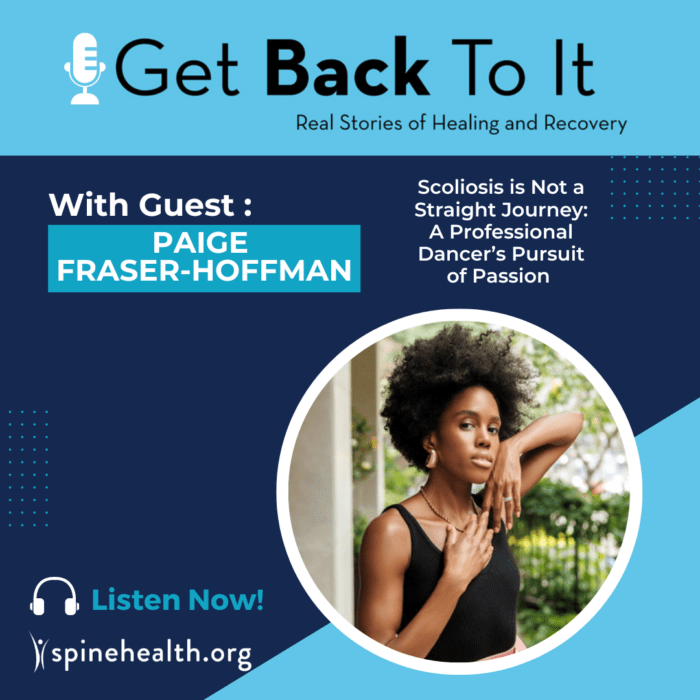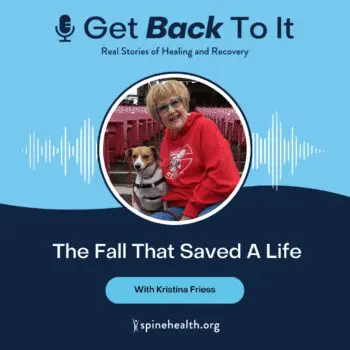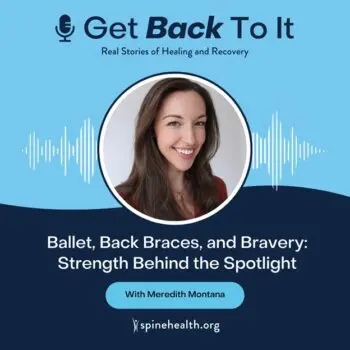Summary:
For Scoliosis Awareness Month, our “Get Back to It” podcast highlights a tale of resilience and perseverance on a Scoliosis Journey. Our host and CEO, Dr. Rita Roy, engages in a candid and eye-opening conversation with Broadway dancer and Spine Health Ambassador, Paige Fraser-Hoffman, who confronted scoliosis at the young age of 13. Paige shares her journey of overcoming fear and the challenges she faced to fulfill her dream of becoming a professional dancer. Through non-surgical treatments, passion, and dedication, Paige overcame physical adversity and forged an incredibly successful career that led her to the bright lights of Broadway.
Whether you or a loved one are dealing with scoliosis, Paige’s story is an informative guide on navigating scoliosis with courage. This is a testament to resilience and the pursuit of passion. Tune in to get inspired and learn valuable lessons on how to navigate life’s curves.



